Contents [hide]
The Magi, fascinating and evocative figures of the Christmas tradition, brought gold, incense and myrrh as a gift to the Child Jesus. But what lies behind the choice of these particular gifts?
The Three Kings and their gifts have for thousands of years been the protagonists of stories and legends, in which popular folklore is mixed with historical events, religion and even more ancient traditions. We have already deepened these figures in an article that explained who the Three Wise Men were, where they came from and even what the origin of their names was.

Who were the Wise Men and their names
We all know the Three Wise Men as the three men who faced a long journey chasing a star with the sole purpose of paying homage to the “King of the Jews”.
In a further article, we deepened the figure of Artaban, the fourth Wise Man, who arrived late to the appointment with the three most famous Magi, but no less important.
In this article, we want to dwell on gold, incense and myrrh, or the gifts that the three Magi Kings brought along on their journey in the wake of the comet Star, through the desert, with its pitfalls, dodging the dangers and intrigues of King Herod, to reach the hut of Bethlehem where in a manger the King of the World had seen the light.
In the history of the Three Wise Men, legends are intertwined with other legends, in a game of evocative references. For example, the journey of the Three Wise Men would also involve the Befana (Epiphany), another character very dear to the Christmas imagination, with the Three Kings celebrated on the day of the Epiphany. She would meet the three travellers and be there to join them. Left behind, she would then dedicate the rest of her life to searching for the Child Jesus, just like the fourth Wise Man we mentioned before, bringing gifts to all children to compensate for his lack.
An element in common between the Three Wise Men and the Befana is surely the fact that they carry gifts.
If the gifts of the old lady with the hooked and lumpy nose are now an exclusive prerogative of children (strictly good, of course), the gifts of the Three Wise Men guard in itself a very deep symbolism, which contains nothing less than the mystery of the dual nature of Jesus, Man and God. Over the centuries many theologians have tried to identify the true symbolic meaning of the gifts of the Three Wise Men. Some wrote that gold symbolizes faith, incense symbolizes holiness, myrrh symbolizes passion. For others, the three gifts coincide with the three theological virtues: gold is charity, incense is faith, myrrh is free will.
Let’s see the gifts of the Magi one by one.
Incense: properties and benefits
The incense, offered by Gaspare, the youngest of the Magi, is a resin obtained from the bark of plants of the Burseraceae family, originating from the Arabian Peninsula and north-eastern Africa, in particular the Boswellia cateri, and in this case, the correct name of the resin is franchincenso. Also called “gum of olibanum”, or simply olibanum, incense has been used since ancient times in religious ceremonies and rituals.
The smoke rising from the incense burned was considered a welcome offering to the gods and favoured meditation and purification. The same word “incense” probably comes from the archaic Latin “incensum”, lit, ignited and indicates how this substance was used.
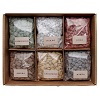
But the use of incense went beyond religious ceremonies and purification rites. Their fumes also had disinfecting properties for the environment and for healing purposes. In particular, incense has a powerful anti-inflammatory, antioxidant and antimicrobial charge. Its qualities make it very effective to relax the mind and body, to counteract intestinal and respiratory disorders. A warm bath enriched with drops of incense oil combats stress and transmits a feeling of peace and relaxation to those who dive.
Mixed with toothpaste is a valuable ally for oral hygiene. Its astringent properties facilitate the weakening of wrinkles and signs of ageing, but also of scars, wounds, acne and stretch marks. It fights gastrointestinal disorders, from indigestion to irritable bowel syndrome. It also affects the hormone level, balancing the levels of hormones and eliminating any imbalances.
Many of these applications aimed at the health of body and spirit must have been well known in antiquity. By giving incense to the Infant Jesus the Magio Gaspare on the one hand honoured Him with something precious and useful to preserve and cure the body, on the other hand, he recognized His divine nature, offering him a gift that was usually offered as a sacrifice to the gods and burned in their temples.
What is the myrrh
Also the myrrh, or myrrh incense, brought as a gift by Baldassarre, the dark-skinned Magio, is a resin. It is also extracted from the trunk of a Burseracea, although of another kind than incense: the Commiphora myrrha. The term “myrrh” comes from the Semitic word murr which means “bitter”.
It is native to Somalia and Ethiopia, and it is no coincidence that what, among the Three Wise Men, was characterized by somatic features attributable to the people who lived in those lands. In fact, the reasons that led religious iconography to depict Baldassere as an African, with dark skin, frizzy hair, snub nose, are very complex and have developed over time.
On the one hand, there was the will to attribute to the three Magi characteristics that made them the personification of the three continents and the three human races, but this happened in medieval times. On the other hand, we should dwell on the new traditions that came to the West around the twelfth-thirteenth century, on the martyrs-soldiers of the Theban Legion, who were Nubians, and therefore of black skin, or on the figure of the “Priest Gianni”, described by Marco Polo, which overlapped that of the Ethiopian emperor. These characters infused a new vision of black people into European peoples, accustomed to associating black skin and certain facial features with the devil and demonic creatures.
What interests us here is myrrh, the precious substance with an extraordinary perfume that this Wise Man brought as a gift. Since ancient times myrrh was known and appreciated for its antiseptic and antibacterial properties. It was mainly used in the liquid state, or in powder, mixed with oil and balsams.
Still today it is used in various forms and with countless purposes, for its anti-inflammatory, antispasmodic and soothing virtues. It is used as a remedy for respiratory diseases, but also in case of food poisoning, and as incense is burned to purify the environment and infuse peace and well-being. In addition, the oil derived from myrrh has exceptional soothing and nourishing properties, valuable to moisturize delicate and sensitive skin without greasing it. It’s perfect for cracking, too.
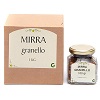
As for the symbolism of myrrh as a gift to Jesus, as incense indicates the recognition by the Three Wise Men of His divine nature, myrrh celebrates His humanity. This is because in ancient times myrrh was used among other things for the cult of the dead. Already in ancient Egypt, it was used in the process of embalming, and it was thought that it was decisive in the victory of life over death. In the Bible, it is mentioned many times, both in the priestly sphere, as it was used as anointing oil for priests and to perfume the ceremonial garments, and as a bearer of wisdom and love (its aroma was considered an aphrodisiac).
In the Passion of Christ myrrh is present first mixed with wine to relieve His sufferings, then it is used by Nicodemus to wrap His body deposed from the cross. Again, on Easter day, the women who go to the tomb bring aromatic ointments for the body of Jesus. They were probably based on myrrh, and in this sense, this substance is linked to the Resurrection, a sign that the love of Jesus is stronger than death.
The symbolic meaning of Gold
Finally the gold, gift of Melchior, the oldest of the Three Wise Men. His very name means King, and the gift he bears, gold, is precisely the symbol of the recognition of the kingship of Jesus by the Three Wise Men. In fact, gold was the gift reserved for the Kings and Jesus was in the eyes of the Magi the King of Kings. This precious metal has always been associated with light, the sun, with the ability to spread strength and energy. All great civilizations have used gold to glorify their rulers and gods.
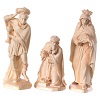
According to several legends, Melchior offered gold in the form of a golden apple, representing the perfection of the world, and thirty denarii. In the hands of Jesus the apple was reduced to dust, to symbolize that the Child had come to bring a new world.
The thirty dinars of gold would have been those which Abraham had used to buy the burial ground for himself and his family, the same offered to the brothers of Joseph when they sold him as a slave, then came across the Temple of Jerusalem, where Melchior would take them as a gift to Jesus. But the legend goes on: Mary lost the thirty denarii during the escape to Egypt and with them all the other gifts. A sick pastor found them in the desert, on his way to Jerusalem to be healed by Jesus, who had meanwhile become a man. To Him, the shepherd offered the gifts and the thirty denarii, and Jesus offered them to His turn to the temple. Those same thirty denarii would have paid Judas’ treachery.
There is also an interesting theory about an erroneous translation of the gospel from Aramaic, according to which the gold mentioned is not the metal, but the gold of the East, or turmeric. This spice, which has the colour of gold, is endowed with great healing virtues, and this would connect it to the properties of incense and myrrh. In this way, the Three Wise Men would have given to the Child Jesus two incenses and one spice, all precious materials, all deeply linked to the spiritual life of the ancients, to religious worship and to that of the deceased, but also to the care of the body, health, the triumph of life. This interpretation would therefore also be appropriate.

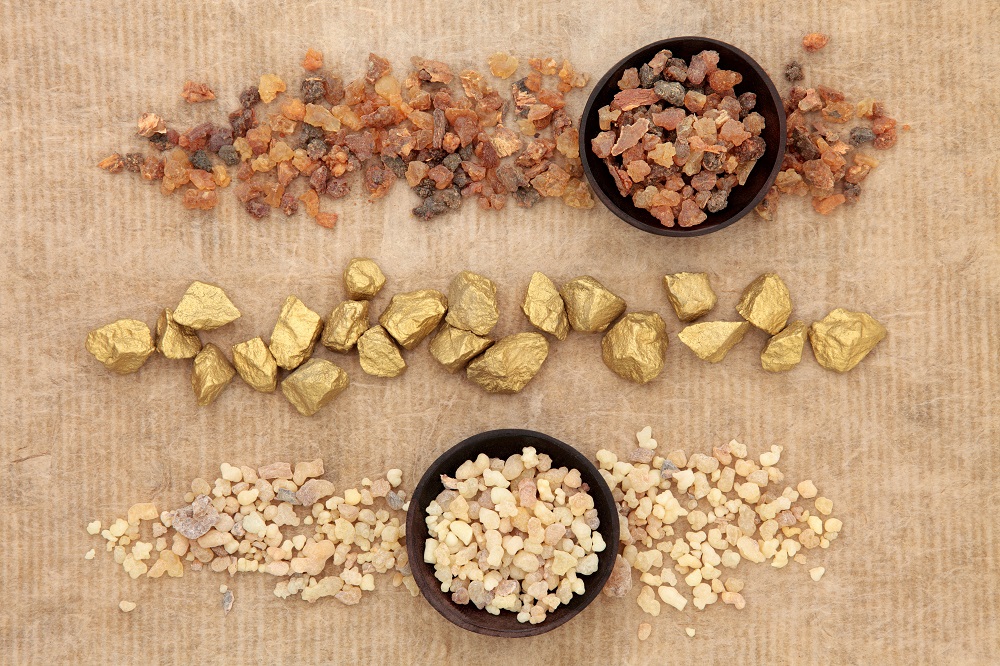



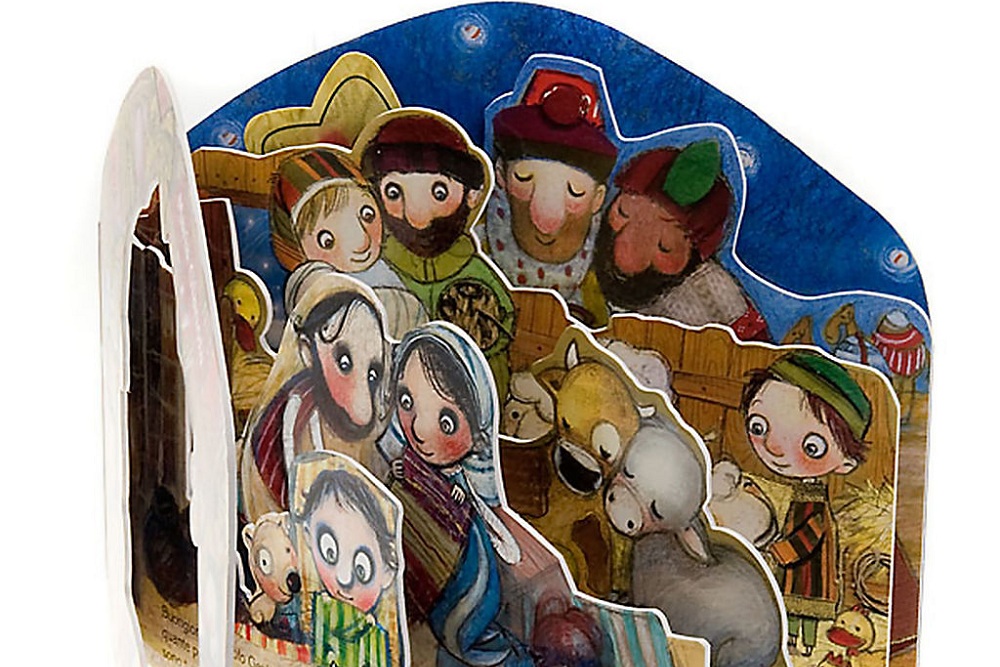
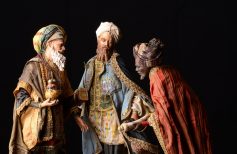


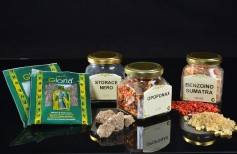









 19 March 2025
19 March 2025






